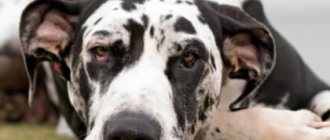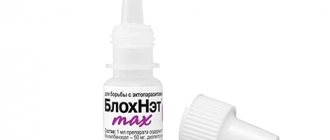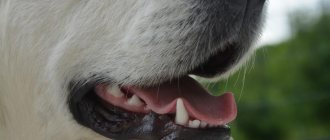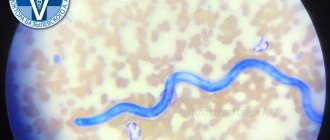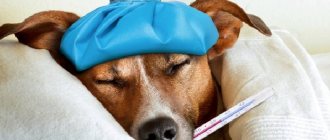Many owners encounter the problem of hair loss in their animals. Shedding is a natural periodic process of hair renewal. Normally, a dog sheds within 4-5 weeks. However, you need to monitor the condition of your pet in order to notice in time if this process has taken too long or even developed into alopecia.
Alopecia is baldness, pathological hair loss, which can be caused by many factors, from stress to endocrine diseases. Therefore, if you notice that your dog’s hair quality has changed, or she is shedding for too long, this is a symptom of a possible serious illness. Make an appointment with your veterinarian.
Causes of hair loss in dogs
They are usually divided into 2 groups – hormonal and non-hormonal.
The second include: allergies, dermatological problems, fungal and bacterial infections, diseases due to parasites, poor diet and much more. Since there are a lot of factors, we will look at the main diseases that lead to problems with hair.
Hormonal causes have one thing in common. With them, alopecia usually appears symmetrically.
Hormonal
Cushing's syndrome is a pathological condition caused by excess cortisol. Cortisol is a hormone produced by the adrenal glands. Its main function is to help the body cope with any negative effects, in other words, it is a stress hormone. At the beginning, increased appetite, thirst and frequent urination are noted. The next stage is a general deterioration in the dog’s condition, a sagging belly, and deterioration in hair quality. And the most obvious symptom is symmetrical baldness of large areas on the animal’s body, paws and neck. There is no itching. If you do not start treatment, complications will begin in the form of diabetes and other side diseases.
Hypothyroidism is a disease caused by dysfunction of the thyroid gland. In the early stages, lethargy, apathy, and weight gain are observed. Dermatological symptoms of hypothyroidism are symmetrical non-inflammatory alopecia, in place of which the skin subsequently becomes darker (hyperpigmentation), a general deterioration in the condition of the skin, as well as the appearance of dandruff (white coating on hairs).
Hypothyroidism manifests itself differently in different breeds. For example, in beagles, the amount of hair decreases by three times, but large areas of baldness are not observed.
Hyperandrogenism is a disease caused by excessive stimulation of testosterone due to tumors of the testes. Therefore, it most often occurs in older, uncastrated males, but can also occur in castrated males and females due to the synthesis of androgens in the adrenal glands. Androgen-dependent tissues are the tail gland and prostate gland in males, as well as the tissues of the paraanal glands in both males and females. So bald patches are observed in the groin and tail area.
Hypoandrogenism is a disease caused by a lack of testosterone. More common in older, neutered dogs. It is characterized by hair loss in the genital and anal areas, and the skin peels.
Lack of growth hormone. A rare occurrence in dogs, it mainly occurs in German Shepherds. Appears in puppyhood. The main teeth do not erupt, the coat does not change, which leads to symmetrical baldness of the body, without affecting the head and limbs. Bald skin begins to peel, darken, become covered with spots and ulcers.
An excess of estrogen (the female sex hormone) occurs in both females and males. This is associated with ovarian cysts or testicular tumors, respectively. As a result, females may develop false pregnancy and infertility. Hair falls out symmetrically on the sides and belly. The skin in the armpits and groin area becomes dense and stretched.
Non-hormonal
An allergy is the body’s response to some irritant. There are many types of allergies, mainly:
- food allergy (it could be provoked by both natural products and feed; the allergen can only be identified by exclusion);
- flea dermatitis (allergen - foreign protein);
- atopic dermatitis (allergens can be feathers, mold, dust, pollen, plants, etc.).
Main symptoms: severe painful itching, rash, local hair loss, discharge from the eyes and nose, some areas of the skin may change color.
It is important to distinguish protein poisoning from food allergies. The signs are very similar, however, in the first case, the dog does not digest the meat and vomits, but hair may also fall out and the eyes become watery.
Fungal and bacterial infections. These are dermatitis caused by bacteria. As a rule, redness appears first, then ulcers appear on the skin, as a result of which the skin and hair become “wet.” Subsequently, the affected areas are saturated with exudate, and the hair falls out completely. The dog has an unpleasant odor.
Scabies is a disease caused by parasites (mites). Mites can parasitize on the skin, under it, and in hair follicles, causing severe itching, redness, crusting and hair loss. The dog constantly scratches and licks problem areas, sometimes even tearing itself until it bleeds.
Parasitic diseases
- demodicosis (dandruff is observed in places);
- sarcoptic mange (most often found on the head and limbs);
- otodectosis (ear scabies);
- cheyletiosis (usually localized on the back);
- notoedrosis (moves quickly, is contagious to humans) and many others.
Eczema is an inflammatory process on the skin of an animal. It can be dry and weeping. Weeping eczema is characterized by the frequent formation of pustules in one place, which open and form an ulcerative surface. With dry eczema, on the contrary, the skin becomes dry and either becomes covered with scales or, on the contrary, becomes very stretched. Naturally, wool does not grow in these places.
Also, hair loss can be caused by a lack of nutrients and vitamin deficiencies due to an unbalanced diet. In this case, a large amount of hair is lost, but this does not lead to the formation of hairless areas.
Sunburn can be a factor in hair loss (in severe cases). Some dogs are particularly sensitive to ultraviolet radiation, such as dog breeds with very short hair (Dalmatians, Weimaraners, Chinese Cresteds, Boxers, Xoloitzcuintles, Dobermans, etc.); light-colored dogs and animals with chronic skin diseases.
The coat is the dog’s natural protection from exposure to ultraviolet rays. Therefore, it is highly not recommended to cut your dog’s hair short, much less shave it!
Basic medical conditions
If a dog experiences hair loss and does not lose it throughout the body, then the problem may lie in problems with the internal organs, endocrine system or metabolism. The skin is technically the largest organ in the body and requires a huge amount of nutrients to stay healthy. If your dog has an underlying condition, his hair and fur are usually the first to suffer because the body shifts energy and plastic resources away from the skin and toward the internal organs that need help.
- Hormonal conditions such as hypothyroidism, adrenal or growth hormone disorders can cause your dog to lose hair.
Some dogs may lose hair after neutering due to decreased testosterone levels. Liver and kidney diseases and severe cancers (cancer, melanoma, sarcoma) can also cause unexplained hair loss. If your veterinarian suspects that your dog's hair loss is due to an internal problem, he or she may recommend a thorough laboratory examination and possibly an x-ray or ultrasound to determine the cause. - Excessive hair shedding can be caused by stress, poor diet, pregnancy, breastfeeding or any other underlying medical condition. If you think your dog is losing more hair than usual or is developing bald patches, make an appointment with your veterinarian. Treatment for dog hair loss will depend on many factors and other needs of your pet's body.
- A dog losing hair should see a veterinarian, but its condition can often be significantly improved with a simple change in food or medications for fleas, ticks, and itching. It is important not to start the problem, to provide proper care and cleaning of the fur of domestic dogs. This way you can detect the earliest signs of a hair loss problem.
^Top
Treatment
At home, you will not be able to diagnose your dog, much less prescribe treatment. If you notice alarming symptoms in your pet, contact your veterinarian. Remember, hair loss cannot be treated, as it is only a sign that your pet is sick, and the real problem is inside the body. Each case is individual, some problems can be solved by sterilization, others by a balanced diet. But to identify the cause, a number of studies are needed.
Prevention
To keep your pet's fur healthy, it is necessary to balance the dog's diet and enrich the diet with bioactive additives (fatty acids, B vitamins, amino acids, brewer's yeast, biotin). Also, we must not forget about activity. Your pet needs fresh air, active walks, games and attention from the owner. Do not forget to periodically thoroughly comb the dog, inspect the integrity of the skin and monitor the general condition of the animal. There are special vitamin and mineral complexes to improve the quality of dog fur.
Tiny culprits of big problems
Infecting a dog with parasites, such as scabies mites, will also lead to baldness.
Scabies is a painful and contagious disease. It threatens not only the four-legged pet, but also the owners. The dog's hair falls out in places; at the beginning of the disease, the animal becomes bald in the eyelid area and in the corners of the mouth. The size of the bald areas is small (about the size of a penny), but with the further course of the disease, if the dog does not receive treatment, the areas merge into a large alopecia. The dog suffers from itching and scratches constantly. The advanced form of the disease leads to complications, pyoderma. The second form of mange is characterized by initially severe itching and extensive baldness as the dog itches excessively. Scabies is caused by two types of parasitic mites. Special tests will help determine the type of parasite and provide effective treatment.
Dogs experience severe hair loss as a result of fungal infections (ringworm), seborrhea and vitiligo, yeast infections and color mutation alopecia.
Zinc deficiency and solar dermatitis lead to hair loss, ulcers, dryness and roughening of balding skin. Dogs infected with worms and those whose immunity is weakened due to a serious illness often go bald. The pet’s health must be monitored, deworming must be carried out, immunostimulating medications must be given, and the fur must be properly cared for.
Briefly about the main thing
- Shedding is normal. Its duration depends on the breed, age and lifestyle of the dog. Most dogs shed twice a year for 3-4 weeks. Some can shed all year round (Dalmatians, Yorkshire terriers, poodles), but in small amounts, so it is practically unnoticeable.
- You need to take care of your dog's fur. To detect pathology in time.
- There may be hormonal and non-hormonal causes of hair loss.
- Hormonal disorders are characterized by symmetrical alopecia, caused by hormonal imbalance.
- Treatment for some of these disorders may be sterilization.
- Other factors may be: allergies, fungal and bacterial infections, parasites, improper feeding, sunburn.
- In no case should you self-medicate, since it is impossible to make a diagnosis at home, and your actions can harm the animal.
- For your dog's health it is necessary: a balanced diet, systematic active walks, combing, you can use dietary supplements and vitamin-mineral preparations.
